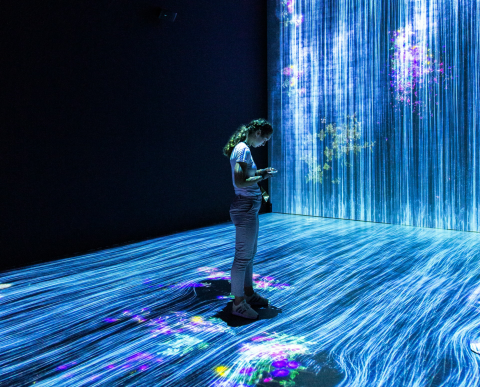
foto: Photo by mahdis mousavi on Unsplash
As far back as the late sixth century BC, the Greek philosopher Parmenides declared, “nothing comes from nothing.” In the digital era, every two or three years now, apparently unprecedented phenomena seem to come from nothing and yet appear to have the power to revolutionize the world and the law. A few years ago, it was Web 2.0, then Cloud Computing, Blockchain and Web 3.0. Over the last year, countless articles have anticipated global transformation through the metaverse and NFTs (non-fungible tokens), fueling interest around the question of whether there is an urgent need for new regulations to adapt to these innovations. In other words, should the law adapt to the metaverse or should the metaverse adapt to the law? For the reasons set out below, the most appropriate response at this stage is the latter.
Since the rise of the Internet over two decades ago, we have enjoyed an online network based on information, data and telecommunication, with a range of standalone virtual worlds emerging, mainly on social media and video games like Second Life, Instagram, Fortnite, TikTok and Roblox. The metaverse promises interconnected virtual environments controlled by electromyography (EMG) movements and neural interfaces. In the metaverse, companies will have the unprecedented ability to exploit the full potential of the data they collect.
The technology sector and the video game industry are preparing for the advent of the metaverse: a network of 3D virtual worlds, where humans can interact with each other socially and economically, mainly through avatars. Despite great media attention, the metaverse does not yet exist, and is still far from being a reality, at least as currently described by some reporters. This is largely because of the demanding computing requirements and standardized protocols needed for it to take off.
In contrast, NFTs are already with us. Based on existing blockchain technology, NFTs are cryptographic units of data, with unique metadata. As such, NFTs can be distinguished from one another and can hold other kinds of information, like the identities or artwork of different individuals. Their uniqueness makes them capable of being sold or traded, with a digital ledger registering all transactions. NFTs harness the capabilities of blockchain technology to create non-fungible digital files with ─ most importantly for the entertainment industry ̶ an image, graphic or video embedded in the token, which determine its value in the market.
As noted above, many voices are now demanding new regulations for the metaverse. Why? To protect users when they interact in this virtual world, and to close an apparent gap between reality and the law.
Assertions that the current regulations do not apply in the metaverse, that existing laws are not adapted to that environment, or that technology travels faster than the law, are common but, in my view, they are generally incorrect.
Over the last 30 years, countries with a strong Internet presence have established new rules to address e-commerce, criminal activities involving technology, consumer rights on digital content and the liability regime for Internet service providers, to name a few.
Take intellectual property (IP) laws as an example. They protect, among others, authors, inventors, producers, designers and performers by granting them exclusive rights over their copyright, trademarks, patents, industrial designs or trade secrets. The regulation of IP rights is not primarily focused on the physical object in which a creative work, a distinctive sign, or a technical innovation is embedded, but rather on their intangible aspects.
While civil legislation regulates the ownership of physical property (a car, a book, or a purse, all of which can contain trademarks, patents, or works of authorship), IP laws govern the ownership regime of the non-tangible elements of such property. In IP jargon, this is the difference between the corpus mysticum (the intangible asset) and the corpus mechanicum (the physical representation) of such an asset. This principle has been applied for centuries and is also fully applicable to the metaverse and NFTs.
In the metaverse, companies will have the unprecedented ability to exploit the full potential of the data they collect.
The metaverse is a virtual universe where avatars controlled by humans or computers can control virtual items, such as vehicles, weapons, or furniture, all of which can feature trademarks or copyrighted works. Because IP laws deal with the intangible elements (corpus mysticum) of an object, whether physical or virtual, the obvious conclusion is that the builders of the metaverse will have to respect the rights of inventors, designers, and owners of distinctive signs as in the real world. Consequently, a given right holder will be entitled to prosecute the exploitation of his or her IP rights in the metaverse, for example, when attached to a virtual purse or jacket developed for digital avatars.
Regarding NFTs, the conclusion is similar. NFTs are digital files in which creative works or other subject matter, such as a video or an artwork, can be embedded. As long as copyright provides an exclusive right over original works of authorship (corpus mysticum) and this is distinct from the ownership of any digital object in which the works are embedded (corpus mechanicum), then anyone who uses, for example, a sound recording or a clip from a video game in an NFT will need prior authorization from the copyright holder of such work. There is, therefore, little debate on the application and validity of the current regulations to NFTs and the metaverse.
From a legal standpoint, the Berne Convention for the Protection of Literary and Artistic Works, now ratified by 181 countries, establishes that contracting parties must grant exclusive rights to authors over their works irrespective of the type or form of their expression. The Berne Convention has since been supplemented by other international agreements, including the WIPO Copyright Treaty, adopted in 1996, which adapts the Berne Convention to the digital environment. This agreement (Agreed Statement concerning Article 1(4) of the WIPO Copyright Treaty) makes it clear that the storage of a protected work in digital form in an electronic medium (such as an NFT or a file, the content of which is displayed in the metaverse) constitutes a reproduction which needs the prior approval of the copyright holder. It seems that the law does not always travel so slowly.
New challenges for IP rights owners
However, these new forms of entertainment do raise a number of challenges for IP rights owners, although these challenges stem from other sources. Authors, producers, publishers, and proprietors of trademarks have exclusive rights over their intangible assets. These rights, however, are not absolute, as the Berne Convention contemplates certain scenarios in which they may not exercise such rights. Some uses, such as the reproduction of a literary work for a book citation or the use of a brand to depict a brand owners’ products or services are outside the exclusivity space of right holders.
In principle, therefore, if we want to use the trademark of any company in a digital object, such as an NFT or an item in the metaverse, we need to request permission from the owner of the mark. Notwithstanding the fact that in cases involving video games, some courts have established, for example, that certain descriptive uses of third parties’ trademarks don’t need their prior consent.
In principle, if we want to use the trademark of any company in a digital object, such as an NFT or an item in the metaverse, we need to request permission from the owner of the mark.
What the courts are saying
In the copyright realm, there have also been a number of prominent cases of use of third parties’ content without permission. One of the most relevant examples is the claim brought by Solid Oak Sketches, the copyright holder of certain tattoos, against 2K Games, the publisher of the well-known video game franchise NBA 2K. The claimant owned the rights to several graphic designs featured in the tattoos of famous basketball players (including Lebron James) and argued that its copyright was infringed when reproduced in the digital avatars of the athletes in the video game. The same court that judged the Humvee case (the United States District Court, Southern District of New York) also ruled in the defendant’s favor, applying the de minimis use defense (where such a small portion of the protected work has been used that the infringing work is not substantially similar to the copyrighted work and is therefore none-infringing), the implied license defense, and the fair use defense, based on the artistic nature of video games.
Nevertheless, in other cases, courts have determined that video game developers have gone too far when using third parties’ IP. As such, it is clear that these matters need to be analyzed on a case-by-case basis.
The immediate conclusion, however, is that there are a good number of precedents to rely on when debating the necessity for specific uses of IP rights in NFTs or the metaverse. As said, nothing comes from nothing and, in fact, historically, the development of new regulation has been based on the application of the principle of learning from previous experiences. Another takeaway is that the metaverse and NFTs are not, at least from a legal standpoint, as disruptive as some believe; at the end of the day, virtual worlds and digital objects have already existed for two decades.
It is a certainty that NFTs and the metaverse, when it comes into being, will bring many challenges to owners of IP rights. Most of these challenges cannot be anticipated at this stage. Consequently, we must analyze NFTs, the emergent metaverse and any other new digital phenomena against existing regulations, which have been enacted after thorough debate by multiple countries and cultures. These regulations have also been tested in various scenarios and have proven valid for decades. Undoubtedly, some adjustments will be necessary in the coming years to regulate human interaction in digitally-connected worlds, but these must come when we learn the nature of these challenges. In the meantime, IP rights will continue to be as valid as ever for the advancement of science and the arts.
